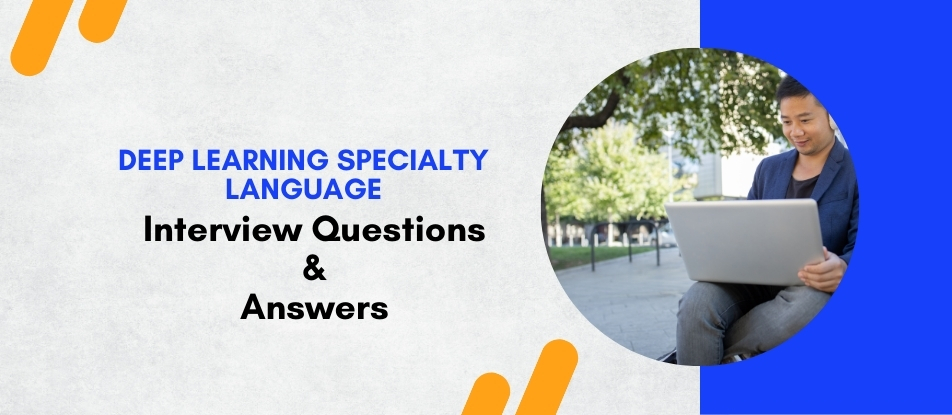
Deep Learning course offers a comprehensive introduction to deep learning, covering essential concepts such as neural networks, backpropagation, and activation functions. Participants will explore various architectures, including CNNs and RNNs, and gain hands-on experience through practical exercises. Ideal for beginners, this course lays the foundation for advanced deep-learning techniques and applications in fields like image recognition, natural language processing, and more.
Deep Learning Specialty Language Interview Questions Answers - For Intermediate
1. Explain the difference between epoch, batch, and iteration in deep learning.
An epoch refers to one complete pass through the entire training dataset. A batch is a subset of the training data used to train the model in one iteration. An iteration is one update of the model’s parameters using a batch of data. For example, if the training data is divided into 10 batches, one epoch consists of 10 iterations. These concepts are key to understanding how data is processed during training.
2. What are the common loss functions used in deep learning?
Common loss functions in deep learning include Mean Squared Error (MSE) for regression tasks, Cross-Entropy Loss for classification tasks, and Hinge Loss for support vector machines. MSE measures the average squared difference between predicted and actual values. Cross-entropy loss measures the difference between two probability distributions and is widely used for binary and multi-class classification. The choice of loss function depends on the specific task and model architecture.
3. What is the role of optimizers in training neural networks?
Optimizers are algorithms used to minimize the loss function by adjusting the model’s weights during training. Common optimizers include Stochastic Gradient Descent (SGD), Adam, RMSprop, and Adagrad. SGD updates the weights based on the gradient of the loss function. Adam combines the advantages of both AdaGrad and RMSProp, providing adaptive learning rates for each parameter. The choice of optimizer can significantly impact the training efficiency and model performance.
4. What is the difference between overfitting and underfitting in neural networks?
Overfitting occurs when a model learns the training data too well, capturing noise and details that do not generalize to new data, resulting in poor performance on the test set. Underfitting occurs when a model is too simple to capture the underlying patterns in the data, resulting in poor performance on both training and test sets. Techniques like regularization, dropout, and early stopping are used to address overfitting while increasing model complexity and training duration can help mitigate underfitting.
5. How do you evaluate the performance of a deep learning model?
The performance of a deep learning model is evaluated using metrics like accuracy, precision, recall, F1-score, and AUC-ROC for classification tasks. For regression tasks, metrics like Mean Squared Error (MSE), Mean Absolute Error (MAE), and R-squared are used. Cross-validation techniques, such as k-fold cross-validation, are also employed to assess model performance and ensure generalizability. Confusion matrices and visualizations like precision-recall curves and ROC curves provide further insights into model behavior.
6. What is the purpose of hyperparameter tuning?
Hyperparameter tuning involves selecting the optimal set of hyperparameters for a deep learning model to improve its performance. Hyperparameters include learning rate, batch size, number of layers, number of neurons per layer, and dropout rate. Techniques for hyperparameter tuning include grid search, random search, and Bayesian optimization. Proper tuning can significantly enhance model accuracy, convergence speed, and overall performance.
7. What is the difference between supervised and unsupervised learning in deep learning?
Supervised learning involves training a model on labeled data, where the input-output pairs are known, to predict outcomes for new data. Common tasks include classification and regression. Unsupervised learning, on the other hand, deals with unlabeled data and aims to uncover hidden patterns or structures within the data. Techniques include clustering (e.g., K-means, hierarchical clustering) and dimensionality reduction (e.g., PCA, t-SNE). Deep learning models like autoencoders and GANs are also used for unsupervised learning.
8. Explain the concept of reinforcement learning.
Reinforcement learning (RL) is a type of machine learning where an agent learns to make decisions by interacting with an environment to maximize cumulative rewards. The agent takes actions based on its policy, receives feedback in the form of rewards or penalties, and updates its policy to improve future actions. Key components include the state, action, reward, and policy. RL is used in various applications, such as robotics, game-playing, and autonomous systems.
9. What are autoencoders and how are they used?
Autoencoders are a type of neural network used for unsupervised learning, designed to learn efficient representations of data by encoding the input into a lower-dimensional latent space and then decoding it back to the original input. They consist of an encoder, which compresses the input, and a decoder, which reconstructs it. Autoencoders are used for tasks like dimensionality reduction, anomaly detection, and data denoising. Variational Autoencoders (VAEs) are a variant that provides a probabilistic approach to data generation.
10. What is the role of embeddings in deep learning?
Embeddings are dense vector representations of data, commonly used for categorical data like words in natural language processing (NLP). They map high-dimensional data into lower-dimensional continuous vector spaces, capturing semantic relationships and similarities. Word embeddings, such as Word2Vec and GloVe, represent words in a way that similar words have similar vectors. Embeddings enable deep learning models to handle large vocabularies and improve performance in tasks like text classification and language translation.
11. Explain the concept of sequence-to-sequence (seq2seq) models.
Sequence-to-sequence (seq2seq) models are used for tasks where the input and output are sequences, such as machine translation, text summarization, and speech recognition. A typical seq2seq model consists of an encoder-decoder architecture, where the encoder processes the input sequence and compresses it into a fixed-length context vector, and the decoder generates the output sequence based on this context. Attention mechanisms are often added to improve performance by allowing the model to focus on relevant parts of the input sequence.
12. What are attention mechanisms and why are they important?
Attention mechanisms are techniques used in deep learning models to dynamically focus on specific parts of the input sequence when generating each part of the output sequence. They address the limitations of fixed-length context vectors in seq2seq models, allowing the model to consider different input positions with varying importance. Attention mechanisms have led to significant improvements in tasks like machine translation and have paved the way for advanced architectures like Transformers, which rely entirely on attention mechanisms.
13. What is a Transformer model and how does it work?
The Transformer model is a deep learning architecture designed to handle sequential data, primarily used in NLP tasks. It relies entirely on self-attention mechanisms, dispensing with recurrent and convolutional layers. The Transformer consists of an encoder-decoder structure, where the encoder processes the input sequence, and the decoder generates the output sequence. Self-attention allows the model to consider relationships between all input positions simultaneously. Transformers have achieved state-of-the-art results in various tasks, including language translation and text generation.
14. Discuss the importance of model interpretability in deep learning.
Model interpretability is crucial for understanding, trusting, and debugging deep learning models. It refers to the ability to explain the model's decisions in a way that is understandable to humans. Techniques for improving interpretability include feature importance analysis, saliency maps, and SHAP values. Interpretability is especially important in high-stakes domains like healthcare, finance, and autonomous driving, where understanding the model's rationale is essential for ensuring reliability and compliance with ethical standards.
15. What are the challenges and future directions in deep learning?
Deep learning faces several challenges, including the need for large labeled datasets, high computational costs, and difficulties in model interpretability. Addressing these challenges involves developing more efficient training methods, leveraging transfer learning and unsupervised learning, and improving model explainability. Future directions include advancing techniques like meta-learning, continual learning, and integrating deep learning with other fields like reinforcement learning and symbolic AI. The focus is also on making deep learning models more robust, scalable, and accessible for broader applications.
Deep Learning Specialty Language Interview Questions Answers - For Advanced
1. What is gradient descent, and what are its variants?
Gradient descent is an optimization algorithm used to minimize the loss function in neural networks. It involves calculating the gradient of the loss function concerning the model parameters and updating the parameters in the opposite direction of the gradient. Variants of gradient descent include:
- Stochastic Gradient Descent (SGD): Updates parameters using one training example at a time, introducing noise that can help escape local minima but may lead to slow convergence.
- Mini-batch Gradient Descent: Combines the benefits of SGD and batch gradient descent by updating parameters using small batches of data, balancing noise, and convergence speed.
- Momentum: Accelerates convergence by adding a fraction of the previous update to the current update.
- Adam (Adaptive Moment Estimation): Combines the advantages of AdaGrad and RMSProp by adapting the learning rate for each parameter and incorporating momentum.
2. How do you handle overfitting in deep learning models?
Overfitting occurs when a model learns the training data too well, including noise and outliers, resulting in poor generalization to new data. Techniques to handle overfitting include:
- Regularization: Methods like L1 (Lasso) and L2 (Ridge) regularization add a penalty to the loss function to constrain model complexity.
- Dropout: Randomly sets a fraction of the activations to zero during training, preventing the model from relying too heavily on specific neurons.
- Early Stopping: Monitors the model's performance on a validation set and stops training when performance starts to degrade.
- Data Augmentation: Increases the diversity of the training data by applying random transformations like rotation, scaling, and flipping.
- Cross-Validation: Splits the data into multiple folds and trains the model on different subsets to ensure robustness.
3. What is reinforcement learning, and how does it relate to deep learning?
Reinforcement learning (RL) is a type of machine learning where an agent learns to make decisions by interacting with an environment to maximize a cumulative reward. Unlike supervised learning, RL does not require labeled data. Deep reinforcement learning combines RL with deep learning techniques, using neural networks to approximate value functions or policies. Algorithms like Deep Q-Networks (DQN) and Proximal Policy Optimization (PPO) have achieved state-of-the-art performance in complex tasks like playing video games and robotic control.
4. Explain the role of hyperparameters in deep learning and how to tune them.
Hyperparameters are configuration settings that define the structure and training process of a neural network, such as learning rate, batch size, number of layers, and number of neurons per layer. Tuning hyperparameters is crucial for achieving optimal performance. Techniques for hyperparameter tuning include:
- Grid Search: Exhaustively searches through a predefined set of hyperparameters.
- Random Search: Samples random combinations of hyperparameters, are often more efficient than grid search.
- Bayesian Optimization: Uses probabilistic models to find the optimal hyperparameters based on past evaluations.
- Hyperband: Combines random search with early stopping to efficiently explore hyperparameter space.
5. Discuss the concept of sequence-to-sequence models in deep learning.
Sequence-to-sequence (Seq2Seq) models are a class of models used for tasks where the input and output are sequences, such as machine translation and speech recognition. A typical Seq2Seq model consists of an encoder-decoder architecture, where the encoder processes the input sequence and encodes it into a fixed-length context vector, and the decoder generates the output sequence based on this context vector. Attention mechanisms can be added to Seq2Seq models to allow the decoder to focus on different parts of the input sequence during generation, improving performance on long sequences.
6. What is the importance of attention mechanisms in neural networks?
Attention mechanisms allow neural networks to focus on different parts of the input data when generating outputs. This is particularly useful in sequence-to-sequence tasks, where the model needs to handle long sequences and capture relevant information from different time steps. Attention mechanisms improve the model's ability to handle long-range dependencies, leading to better performance in tasks like machine translation, image captioning, and speech recognition. The Transformer architecture, which relies heavily on attention mechanisms, has set new benchmarks in natural language processing tasks.
7. Explain the concept of the Transformer model and its impact on NLP.
The Transformer model is an architecture designed for sequence-to-sequence tasks, particularly in natural language processing (NLP). Unlike RNNs, Transformers do not rely on sequential processing, allowing for parallelization and faster training. The model consists of an encoder-decoder structure with self-attention mechanisms that enable it to weigh the importance of different parts of the input sequence. Transformers have revolutionized NLP, leading to state-of-the-art models like BERT, GPT, and T5, which excel in tasks such as translation, summarization, and question-answering.
8. How does the concept of transfer learning apply to NLP with models like BERT and GPT?
Transfer learning in NLP involves pre-training models on large text corpora and fine-tuning them on specific tasks. Models like BERT (Bidirectional Encoder Representations from Transformers) and GPT (Generative Pre-trained Transformer) have been pre-trained on extensive datasets to learn general language representations. Fine-tuning involves adapting these pre-trained models to specific tasks by training them on task-specific datasets. This approach significantly improves performance and reduces training time compared to training models from scratch.
9. What is the role of ensemble methods in deep learning?
Ensemble methods combine the predictions of multiple models to improve overall performance and robustness. Techniques include:
- Bagging: Trains multiple models on different subsets of the data and averages their predictions to reduce variance.
- Boosting: Sequentially trains models, each focusing on the errors of the previous ones, to reduce bias.
- Stacking: Combines the predictions of multiple models using a meta-model to achieve better performance.
Ensemble methods can help mitigate the weaknesses of individual models, leading to improved accuracy and generalization.
10. Describe the concept of self-supervised learning and its applications.
Self-supervised learning involves training models on tasks where the supervision signal is derived from the data itself, rather than relying on external labels. This approach leverages large amounts of unlabeled data to learn useful representations. Applications include:
- Image Representation Learning: Models learn to predict missing parts of an image or the next frame in a video.
- NLP: Models learn to predict the next word in a sentence or fill in missing words.
Self-supervised learning has shown promise in improving performance on downstream tasks with limited labeled data.
11. Explain the difference between instance normalization, layer normalization, and batch normalization.
These normalization techniques aim to stabilize and accelerate training by normalizing activations, but they operate at different levels:
- Instance Normalization: Normalizes each sample individually, often used in style transfer.
- Layer Normalization: Normalizes across all neurons in a layer for each sample, useful in RNNs where batch sizes may vary.
- Batch Normalization: Normalizes across the batch dimension, reducing internal covariate shift and improving convergence.
Each technique has its advantages and is suited for different types of tasks and architectures.
12. What is the significance of the receptive field in convolutional neural networks?
The receptive field refers to the region of the input image that a particular convolutional layer's neuron is sensitive to. It determines the amount of context captured by the neuron. Larger receptive fields enable the network to capture more global features, while smaller receptive fields focus on local details. The size of the receptive field can be controlled by the filter size, stride, and pooling operations. Properly designing the receptive field is crucial for tasks like object detection and image segmentation.
13. Discuss the role of generative models in deep learning and their applications.
Generative models aim to learn the underlying distribution of the data and generate new samples from this distribution. Types of generative models include:
- Variational Autoencoders (VAEs): Learn a probabilistic representation of the data.
- Generative Adversarial Networks (GANs): Use a generator and discriminator in an adversarial setup.
- Normalizing Flows: Transform simple distributions into complex ones.
Applications include image generation, data augmentation, anomaly detection, and text generation.
14. What is the purpose of using weight sharing in convolutional neural networks?
Weight sharing refers to using the same filter (set of weights) across different positions of the input in convolutional layers. This technique significantly reduces the number of parameters, making the network more efficient and easier to train. Weight sharing exploits the spatial invariance property of images, where patterns like edges and textures can appear in different locations. It helps capture important features regardless of their position, leading to improved generalization and performance in tasks like image classification and segmentation.
15. Explain the concept of graph neural networks (GNNs) and their applications.
Graph Neural Networks (GNNs) are designed to operate on graph-structured data, where nodes represent entities and edges represent relationships. GNNs propagate information through the graph by aggregating features from neighboring nodes. This allows them to capture the complex dependencies and interactions in the data. Applications of GNNs include social network analysis, recommendation systems, molecular property prediction, and knowledge graph completion. GNNs are powerful for tasks where the data is naturally represented as a graph and require modeling intricate relationships.
Course Schedule
| Dec, 2025 | Weekdays | Mon-Fri | Enquire Now |
| Weekend | Sat-Sun | Enquire Now | |
| Jan, 2026 | Weekdays | Mon-Fri | Enquire Now |
| Weekend | Sat-Sun | Enquire Now |
Related Courses
Related Articles
- Navigating Your Career with SailPoint Certification Training
- Power BI Career Opportunities You Should Know About - PL-300 Microsoft Power BI Data Analyst Training Course
- Top 3 Benefits of PRINCE2 Foundation and Practitioner Certification
- How SAP Commerce Cloud Business Users Can Drive Customer Engagement
- How IDMC Administration Training Boosts Your IT Career?
Related Interview
Related FAQ's
- Instructor-led Live Online Interactive Training
- Project Based Customized Learning
- Fast Track Training Program
- Self-paced learning
- In one-on-one training, you have the flexibility to choose the days, timings, and duration according to your preferences.
- We create a personalized training calendar based on your chosen schedule.
- Complete Live Online Interactive Training of the Course
- After Training Recorded Videos
- Session-wise Learning Material and notes for lifetime
- Practical & Assignments exercises
- Global Course Completion Certificate
- 24x7 after Training Support


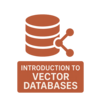
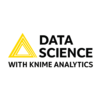



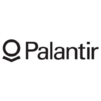


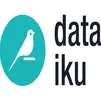

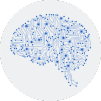


 Join our Live Instructor-Led online classes delivered by industry experts
Join our Live Instructor-Led online classes delivered by industry experts